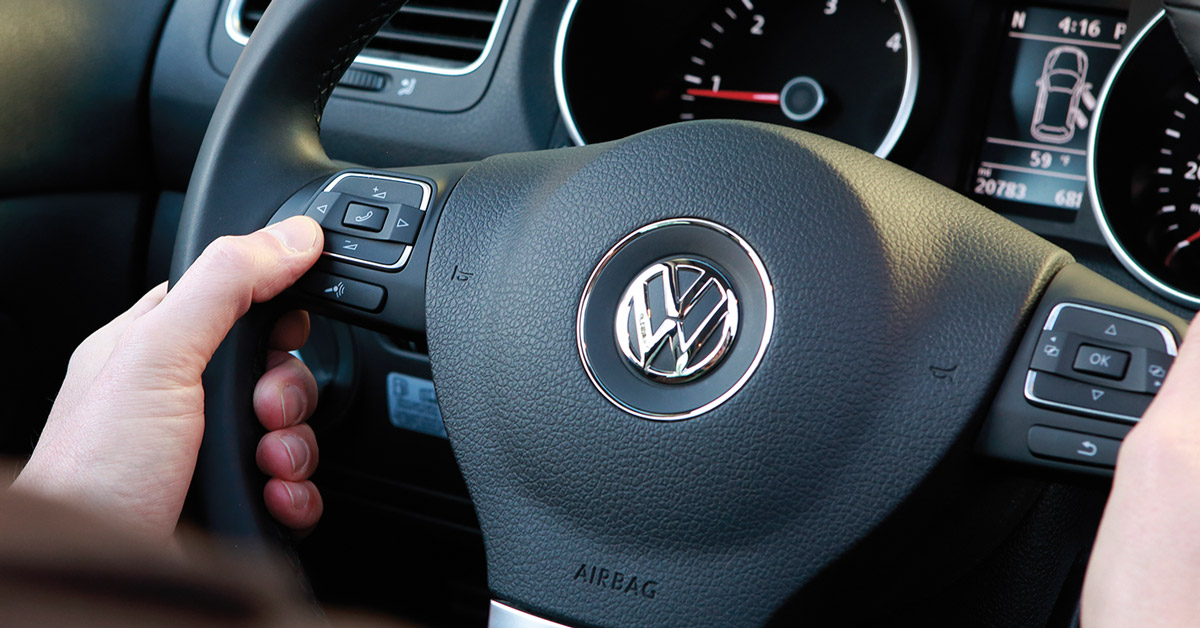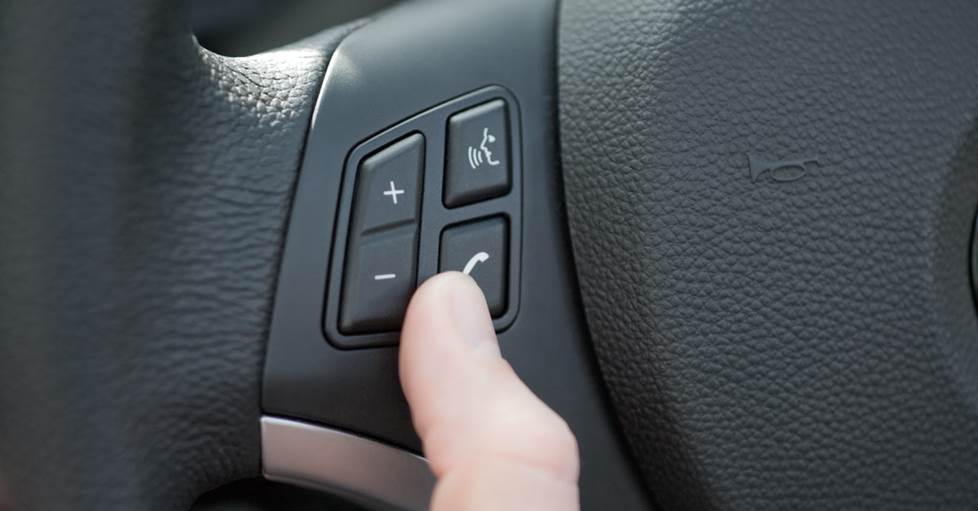Imagine cruising down the highway, your favorite tunes playing seamlessly through your newly installed aftermarket radio. But wait—something’s missing.
You reach for your steering wheel controls, only to realize they’re no longer functioning. Frustrating, right? You’re not alone. Many car owners face this issue after upgrading their car’s audio system. You invested in an aftermarket radio for better sound quality and advanced features, yet the convenience of steering wheel controls feels like a luxury lost in the transition.
The good news is, you don’t have to choose between an upgraded audio experience and the ease of steering wheel controls. This guide will walk you through simple steps to ensure that you can enjoy the best of both worlds. Discover how to keep your steering wheel controls working perfectly with your new radio. By the end of this article, you’ll not only have a seamless driving experience but also regain the control and convenience that makes every drive safer and more enjoyable. Ready to take back control? Let’s dive in!

Credit: www.youtube.com
Choosing The Right Aftermarket Radio
Choosing the right aftermarket radio is crucial if you want to keep those convenient steering wheel controls in your vehicle. Many drivers face the challenge of finding a radio that not only fits their style but also integrates smoothly with existing features. You don’t want to lose the ability to control volume or skip tracks with ease. Let’s dive into what you should consider when picking the perfect radio to match your needs.
Compatibility Check
Before you buy, make sure the new radio is compatible with your car’s model. Not all radios work well with every vehicle, especially when it comes to retaining steering wheel controls. Check the manufacturer’s compatibility list. You might think, “Why go through this hassle?” But imagine the frustration of having a sleek radio that doesn’t connect with your car’s existing systems.
Consider using online forums or talking to your local car audio expert. They often have insights on which radios work best with specific models. You wouldn’t want to be stuck with a radio that requires additional adapters or leaves you with non-functional buttons.
Features To Look For
When browsing options, focus on radios that explicitly support steering wheel controls. Many brands highlight this feature prominently. Look for radios that offer easy installation and user-friendly interfaces. You want something intuitive, not a radio that requires a manual every time you change a setting.
- Ensure Bluetooth compatibility for hands-free control.
- Check if it offers integration with your smartphone apps.
- Find models with customizable display options for a personalized touch.
Think about your daily routine. Do you often switch between songs or adjust the volume while driving? Choose a radio that makes these actions seamless, allowing you to focus more on the road and less on fiddling with controls.
In the end, your choice of an aftermarket radio should enhance your driving experience without sacrificing functionality. What features are non-negotiable for you? Reflect on your needs and make a choice that keeps your steering wheel controls intact and efficient.
Understanding Steering Wheel Controls
Installing an aftermarket radio can disrupt steering wheel controls. Use a compatible adapter to maintain functionality. This ensures you can still manage audio settings safely while driving.
Understanding steering wheel controls can be a game-changer when upgrading your car’s audio system. Keeping these controls operational with an aftermarket radio not only enhances driving safety but also maintains the convenience you’re used to. Whether you’re a tech enthusiast or just someone who enjoys seamless driving experiences, knowing how these controls work is crucial.Functionality Overview
Steering wheel controls allow you to manage your car’s audio system without taking your hands off the wheel. These buttons or dials can adjust volume, change tracks, or switch radio stations. This functionality is all about keeping your focus on the road while still enjoying your favorite tunes. The integration between your car’s steering wheel and the radio is facilitated by a set of wires and sometimes a control module. This setup translates the button presses into commands the radio understands. However, when you switch to an aftermarket radio, this integration can be disrupted, leading to non-functional controls.Common Control Types
Different cars come with various types of steering wheel controls. Some cars have buttons for volume and track changes. Others might include controls for phone calls or voice commands. It’s essential to identify the type of controls your vehicle has before purchasing an aftermarket radio. Knowing this helps you choose the right adapter or interface to keep those controls working. You might wonder if all aftermarket radios support steering wheel controls. While many do, not all of them offer out-of-the-box compatibility. It’s wise to check if your chosen radio supports such features or if you need additional accessories. Have you ever upgraded your car’s audio system and lost some control features? It can be frustrating, but understanding how these controls work can prevent such issues. Maintaining functionality not only enhances your driving experience but also ensures safety on the road.Necessary Tools And Equipment
Installing an aftermarket radio often means losing some original controls. Keeping steering wheel controls is possible with the right tools. You need both basic and specialized equipment. This guide will help you gather everything necessary for a smooth installation.
Basic Installation Tools
Basic tools make the installation process easier. A screwdriver set is a must-have. It helps with removing and securing screws. Wire strippers are also essential. They help in exposing the wires for connections. Pliers are useful for gripping and holding parts. You will also need electrical tape for securing wires. A panel removal tool is helpful too. It prevents damage to your dashboard during removal.
Specialized Adapters And Interfaces
To maintain steering wheel controls, specialized adapters are necessary. These adapters connect your car’s system to the new radio. They ensure that controls work seamlessly. Brand-specific interfaces are also available. They align the new radio with the car’s existing electronics. Purchase the correct model for your vehicle. This ensures compatibility and functionality. Some interfaces even allow for advanced features. They provide more control options through the steering wheel.

Credit: www.crutchfield.com
Installation Process
Upgrading your car’s radio? Keep the steering wheel controls. It’s possible with the right steps. Follow this guide to make it easy.
Removing The Old Radio
First, gather your tools. A screwdriver and trim removal tool are essential. Disconnect the car battery. This prevents electrical shock. Gently remove the dashboard trim. Use the trim removal tool. Locate the screws holding the radio in place. Unscrew them carefully. Slide the old radio out. Disconnect all attached wires. Keep these wires safe. You may need them later.
Wiring The New Unit
Start with the new radio’s wiring harness. Match the wires to the car’s wiring. Usually, wires have matching colors. Connect each wire securely. Use crimp connectors for a strong connection. Double-check your connections. Incorrect wiring can cause issues. Once wired, test the radio. Ensure it powers on. If it doesn’t, recheck the connections.
Connecting Steering Wheel Control Interface
Find the steering wheel control interface. It connects your steering wheel buttons to the new radio. Follow the interface instructions. Connect it to the appropriate wires. Usually, the interface has a plug-and-play design. This makes installation simple. Test the steering wheel buttons. Ensure they work with the new radio. Adjust settings if needed. Now, enjoy your upgraded car stereo system. Drive safely and enjoy your tunes.
Programming Steering Wheel Controls
Upgrade your car’s audio system without losing steering wheel controls. Use a compatible adapter to connect your aftermarket radio. Ensure all connections are secure to retain full functionality.
Programming steering wheel controls can be a game-changer when upgrading your vehicle’s sound system. Imagine cruising down the highway with your favorite tunes playing, and you can adjust the volume or skip a track without taking your hands off the wheel. This seamless integration is possible, and it doesn’t require technical wizardry. Whether you’re a seasoned car enthusiast or just dipping your toes into aftermarket installations, learning how to program your steering wheel controls can enhance your driving experience.Using Manufacturer Software
Manufacturers often provide specific software for programming steering wheel controls with aftermarket radios. This software is usually intuitive and designed to guide you through the process step-by-step. Download the software from the manufacturer’s website and install it on your computer. Once installed, connect your computer to the radio using a USB cable. Follow the on-screen prompts to map your steering wheel buttons to the radio functions. If you hit a snag, don’t hesitate to reach out to online forums for advice from others who’ve been there.Manual Programming Tips
If you prefer a hands-on approach, manual programming might be the way to go. This method allows you to program your steering wheel controls without relying on software. Start by consulting the user manual for your aftermarket radio; it often contains crucial information for manual setup. Begin with identifying the color-coded wires connected to your steering wheel controls. Use a multimeter to verify connections, ensuring each wire corresponds to a specific function. Sometimes, programming is as simple as pressing a sequence of buttons. Experiment and tweak settings until you find what works best for you. Have you ever felt overwhelmed by tech gadgets? Consider breaking the task into small steps, focusing on one button at a time. You’ll feel more confident, and the process will seem less daunting. By investing time in programming your steering wheel controls, you enhance both safety and convenience. What else could make your driving experience more enjoyable than effortlessly controlling your music or calls while keeping your focus on the road?Troubleshooting Common Issues
Installing an aftermarket radio can enhance your driving experience. But it may disrupt your steering wheel controls. Troubleshooting these issues helps maintain control functions. This ensures your car remains safe and convenient.
Signal Interference
Signal interference often occurs after installing a new radio. This may cause your steering wheel controls to act erratically. To resolve this, check the wiring connections. Make sure there are no loose or damaged wires. Sometimes, external devices can cause interference. Remove any nearby devices to see if the controls respond correctly.
Unresponsive Controls
Unresponsive controls are a common issue with aftermarket radios. First, check if the radio is compatible with your car’s control system. Compatibility ensures the system communicates effectively. If the controls still don’t respond, reset the radio. A reset often fixes minor software glitches. Lastly, inspect the adapter. A faulty adapter may prevent signals from reaching the radio.
Maintaining Functionality
Maintaining functionality in your steering wheel controls after installing an aftermarket radio is crucial. Many car owners worry about losing these convenient features. Thankfully, keeping them operational is possible. A few simple steps will ensure your controls work seamlessly. Regular updates and checks are vital.
Regular Software Updates
Software updates are essential for maintaining functionality. Manufacturers release updates to fix bugs and improve performance. Regularly check for updates that support your steering wheel controls. Most aftermarket radios offer easy update options. Downloading and installing these updates can keep your system running smoothly.
Periodic System Checks
Performing periodic system checks can prevent potential issues. Check connections to ensure they are secure and properly installed. Loose connections can disrupt the functionality of your controls. Inspect the system settings, making sure everything is configured correctly. If problems arise, consult your radio’s manual or seek professional help.

Credit: www.crutchfield.com
Conclusion
Keeping steering wheel controls with an aftermarket radio is simple. Follow the right steps. Choose the correct adapter. Make sure it fits your car model. Connect everything properly. Test the setup before finalizing. This ensures a smooth installation. Enjoy your new radio features.
Keep the convenience of steering wheel controls. This setup enhances your driving experience. Save time and effort with easy access. Stay safe on the road. Control your music without distractions. A seamless blend of technology and comfort. Now, enjoy your drive with confidence.
